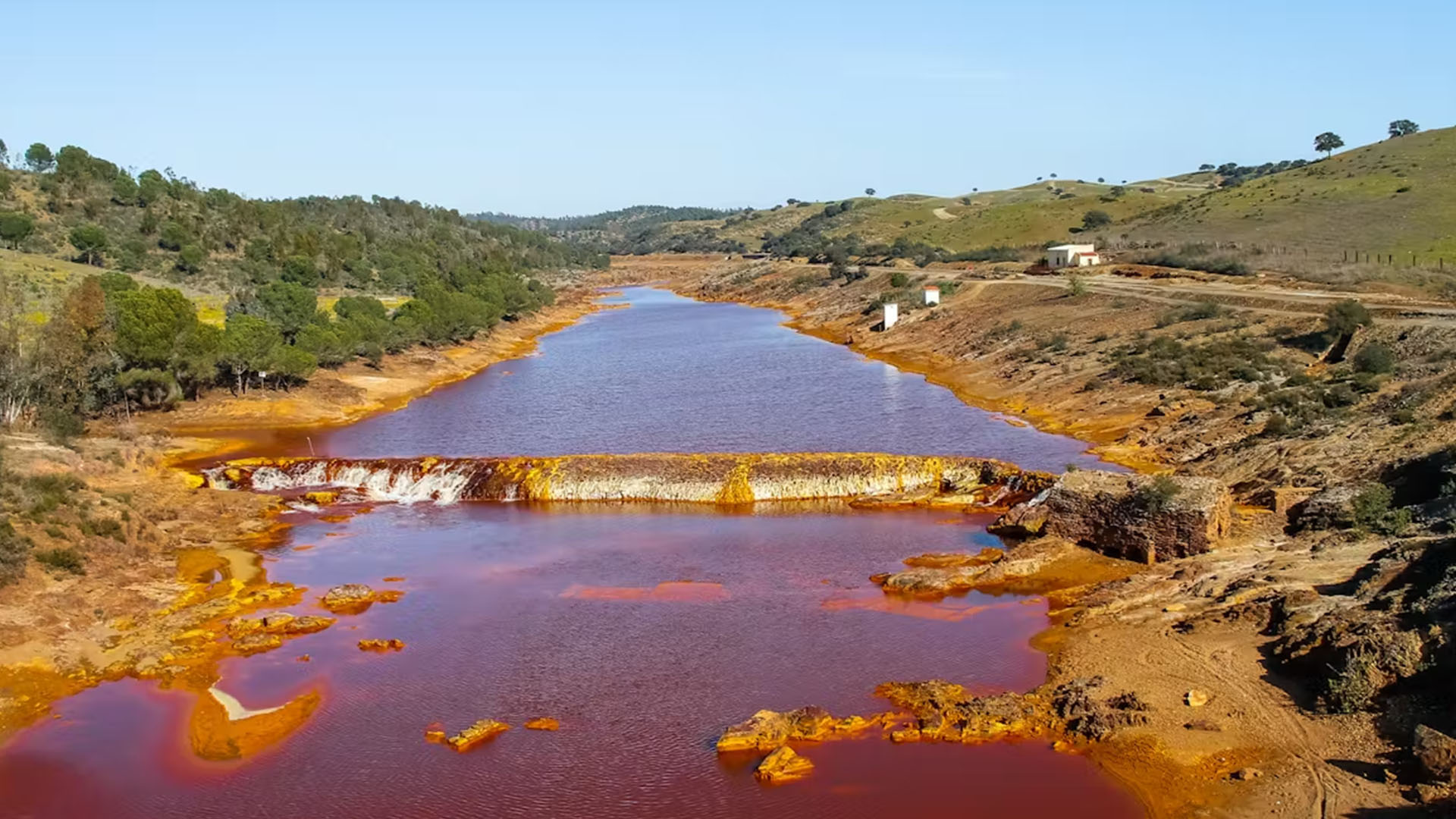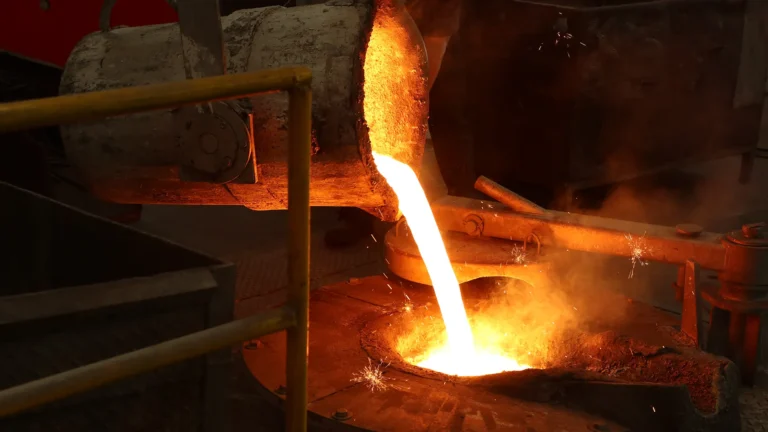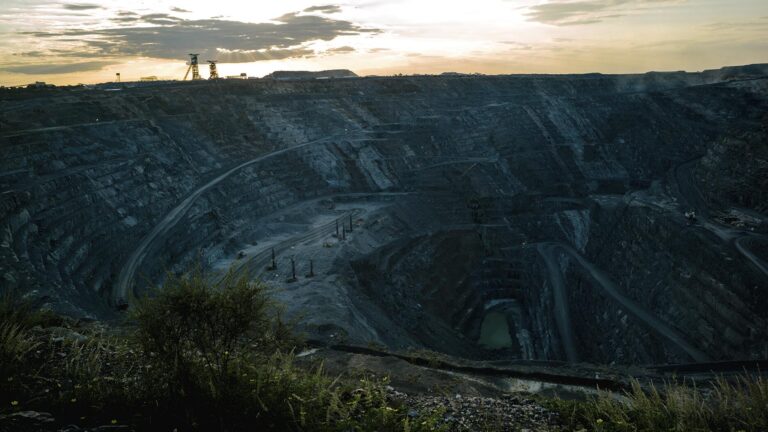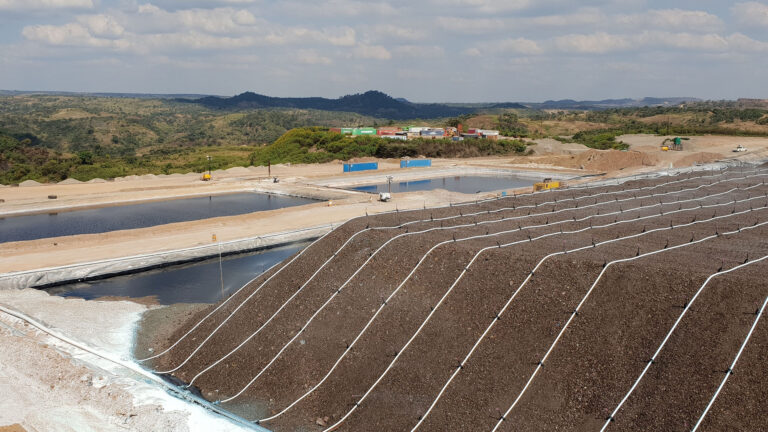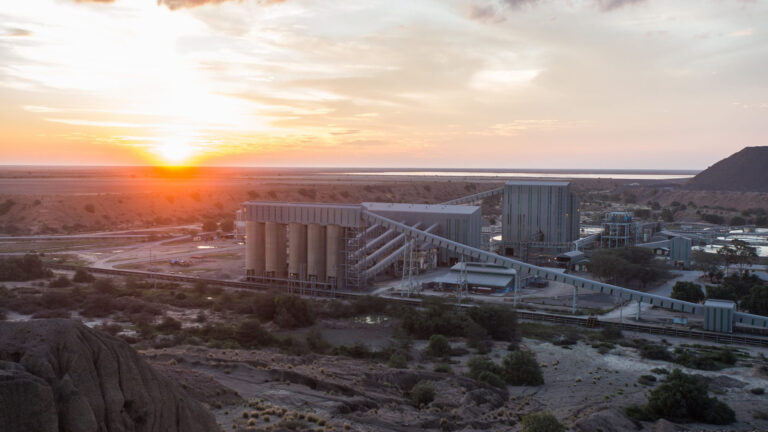Acid Mine Drainage (AMD) is the outflow of acidic water from mining sites, typically when sulfide minerals like pyrite (FeS₂) are exposed to air and water. As background information, AMD is a major concern in environmental science and mining because it leads to widespread water pollution and ecosystem damage. The chemical reaction produces sulfuric acid, which dissolves heavy metals like arsenic, lead, and mercury, contaminating streams, rivers, and groundwater.
Coal mining and metal mines are major contributors to acid mine drainage due to the exposure of sulfide minerals during extraction. As these minerals react with water and oxygen, drainage occurs when contaminated water leaves the mine site and enters the surrounding environment. These reactions form sulfuric acid, which accelerates the release of toxic substances.
The heavy metals produced by these reactions are released into the environment, draining into streams and groundwater and causing significant water pollution.
Why does AMD matter?
It is one of the most serious environmental challenges in mining, capable of polluting water for decades or even centuries after a mine closes. Abandoned mines are a significant ongoing source of AMD pollution, continuing to impact water quality long after mining operations have ceased.
For mining businesses, AMD can create long-term liabilities and cleanup costs running into billions of dollars. For communities, it threatens drinking water, agriculture, and aquatic ecosystems.
The History of Acid Mine Drainage
AMD has been observed for centuries in mining regions.
The Romans documented “poisoned streams” in areas with sulfide mining, noting that acidic waters can occur naturally through rock weathering processes, but are much more common due to mining activities. However, awareness of its full impact grew in the 20th century with industrial-scale mining.
Famous disasters, such as AMD from abandoned coal mines in Appalachia (USA), copper mines in Spain’s Rio Tinto, and the Summitville Mine in Colorado, are notable cases of severe acid mine drainage and environmental impact, highlighting the scale of the problem. Today, AMD remains a global issue affecting coal, gold, copper, and nickel mines.
Terms to Know
- Sulfide Minerals: Minerals like pyrite that generate acid when exposed.
- pH: A measure of acidity; AMD can lower water pH below 3 (very acidic). The presence of certain elements or compounds, such as aluminum or sulfur-producing bacteria, can indicate acid mine drainage.
- Heavy Metals: Toxic metals mobilized by AMD. The presence of these metals in water is a key indicator of AMD contamination.
- Remediation: Processes used to treat or prevent AMD.
- Certain Bacteria: Microorganisms that accelerate the formation and progression of acid mine drainage by catalyzing chemical reactions that release metals and increase acidity.
- Water Sample: A method for analyzing AMD by testing for pH and metal concentrations to determine the presence of pollutants.
The Pros and Cons of Acid Mine Drainage
Pros:
- In rare cases, AMD water can be used to recover metals (e.g., copper recovery from acid drainage).
Cons:
- Severe water pollution.
- The destruction of aquatic life is due to low pH.
- Long-lasting impact (often decades after mining).
- Other metals, such as lead and other heavy metals, that drain from abandoned mines also contribute to environmental pollution.
According to the U.S. Environmental Protection Agency (EPA), AMD affects over 10,000 miles of rivers and streams in the United States alone, significantly degrading stream water quality and harming aquatic ecosystems.
Supporting Cluster Post to Include: [Mine Waste Management]
Examples of Acid Mine Drainage
- Rio Tinto (Spain): The river has been colored red with dissolved iron. The formation of yellow boy, a yellow-orange iron hydroxide precipitate, is a visible indicator of AMD in the river, often coating rocks and streambeds.
- Appalachia (USA): Coal mine AMD damages ecosystems and water supplies. Yellow sediments, commonly called yellowboy, form on streambeds due to pyrite oxidation and serve as an environmental indicator of contaminated water.
- Ok Tedi (Papua New Guinea): Large-scale AMD from copper mining.
- Other examples: Surface water sources such as pond water, rainwater, or snowmelt can become contaminated with acidity at mining sites due to exposure to iron sulfide minerals.
How AMD Forms
Acid mine drainage forms when sulfide minerals, such as pyrite, are exposed to air and water during mining activities, triggering chemical reactions that produce sulfuric acid and release dissolved metals into surrounding water sources.
- Exposure: Sulfide minerals are exposed during mining, often in contact with the surrounding rock.
- Oxidation: Reaction with oxygen, water, and carbon dioxide produces sulfuric acid and weak acids like carbonic acid, which contribute to acid generation.
- Dissolution: Acidic water interacts with surrounding rock, leaching heavy metals into the water.
- Contamination: Polluted water flows into streams and rivers.
Note: Certain plants, especially wetland and aquatic species, can help mitigate acid mine drainage (AMD) through natural remediation processes.
Equation Example: FeS₂ + O₂ + H₂O → Fe²⁺ + SO₄²⁻ + H⁺ (acid generation).
Toxic Metals and the Environment: Release and Transport
Acid mine drainage (AMD) is a significant pathway for poisonous metals to enter the environment, especially in regions with abandoned coal mines and historic mining activity. When the mining process exposes iron sulfide minerals such as pyrite to air and water, a series of chemical reactions occurs.
The oxidation reaction of these sulfide minerals forms sulfuric acid and releases dissolved iron, creating acidic drainage that can dissolve heavy metals like copper, lead, and mercury from surrounding rocks and minerals.
Once released, these dissolved metals are carried by mine drainage into surface water and groundwater, where they can travel far from the original mine site. This acid runoff not only lowers the pH of streams and rivers, making the water more acidic, but also allows toxic metals to remain dissolved and mobile, posing a significant threat to water quality and aquatic life.
The United States Geological Survey has documented that acid mine drainage is a leading cause of water pollution in the eastern United States, impacting thousands of miles of streams and rivers.
The environmental impact of these toxic metals is far-reaching. Acidic waters can harm aquatic ecosystems by reducing species diversity, disrupting food webs, and altering nutrient cycles.
For humans, the presence of heavy metals in drinking water sources can lead to serious health risks, including neurological damage and increased cancer risk. The Environmental Protection Agency has highlighted the adverse effects of acid mine drainage on both environmental and public health.
To address these challenges, passive treatment systems such as constructed wetlands are increasingly used to treat acid mine drainage and remove toxic metals from contaminated water. These systems harness natural chemical processes and organic matter to neutralize acidic waters and encourage the precipitation of dissolved metals, helping to restore water quality.
Agencies like the Pennsylvania Department of Environmental Protection are actively implementing such solutions and reclaiming abandoned mine lands to reduce the environmental impact of acid mine drainage.
Understanding the chemical processes behind acid mine drainage and the transport of toxic metals is essential for effective environmental protection. Geological surveys play a crucial role in identifying areas at risk and guiding remediation efforts. As research in ecological science advances, new strategies continue to emerge for treating acid mine drainage and safeguarding our streams, groundwater, and ecosystems from the long-term effects of mining.
Tips and Reminders for AMD
- Prevention is cheaper than cleanup.
- Proper waste rock management reduces risks.
- Use covers and water treatment systems proactively.
Analyzing Acid Mine Drainage
Key factors in AMD analysis:
- pH levels: Extremely acidic (< 3).
- Metal concentrations: Elevated arsenic, lead, mercury.
- Flow rates: Determines pollution spread.
During AMD treatment, processes such as lime neutralization and constructed wetlands promote the formation of metal precipitates insoluble compounds like metal hydroxides, carbonates, or sulfides which help remove toxic metals from contaminated water by converting them into stable, insoluble forms that can be separated.
For example, South Africa spends over $1 billion annually on AMD treatment in former gold mining areas, underscoring its economic impact.
Resources for AMD
- Books: Mine Water: Hydrology, Pollution, Remediation by Paul Younger.
- Reports: U.S. EPA reports on AMD.
- Organizations: International Mine Water Association (IMWA).
See our list of the Best Books for Mining Students
Closing
Acid Mine Drainage is a major environmental issue in mining, capable of causing long-lasting ecological and economic damage. Proactive prevention and remediation are essential to sustainable mining practices.

